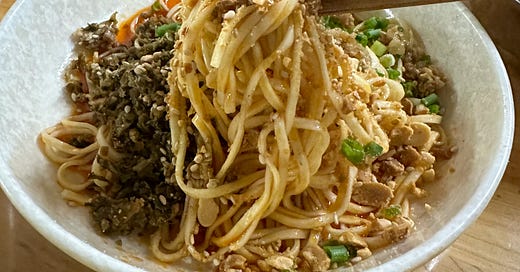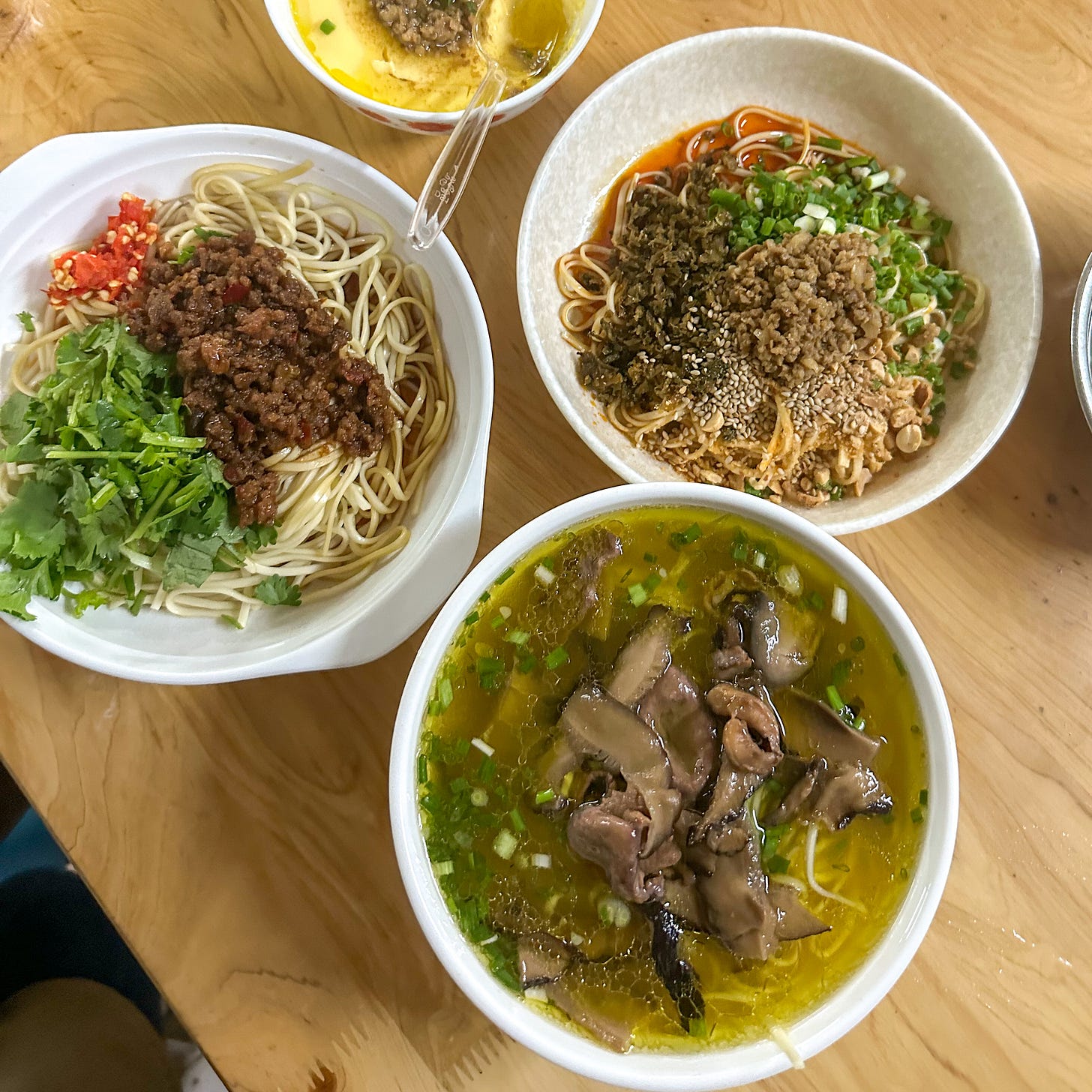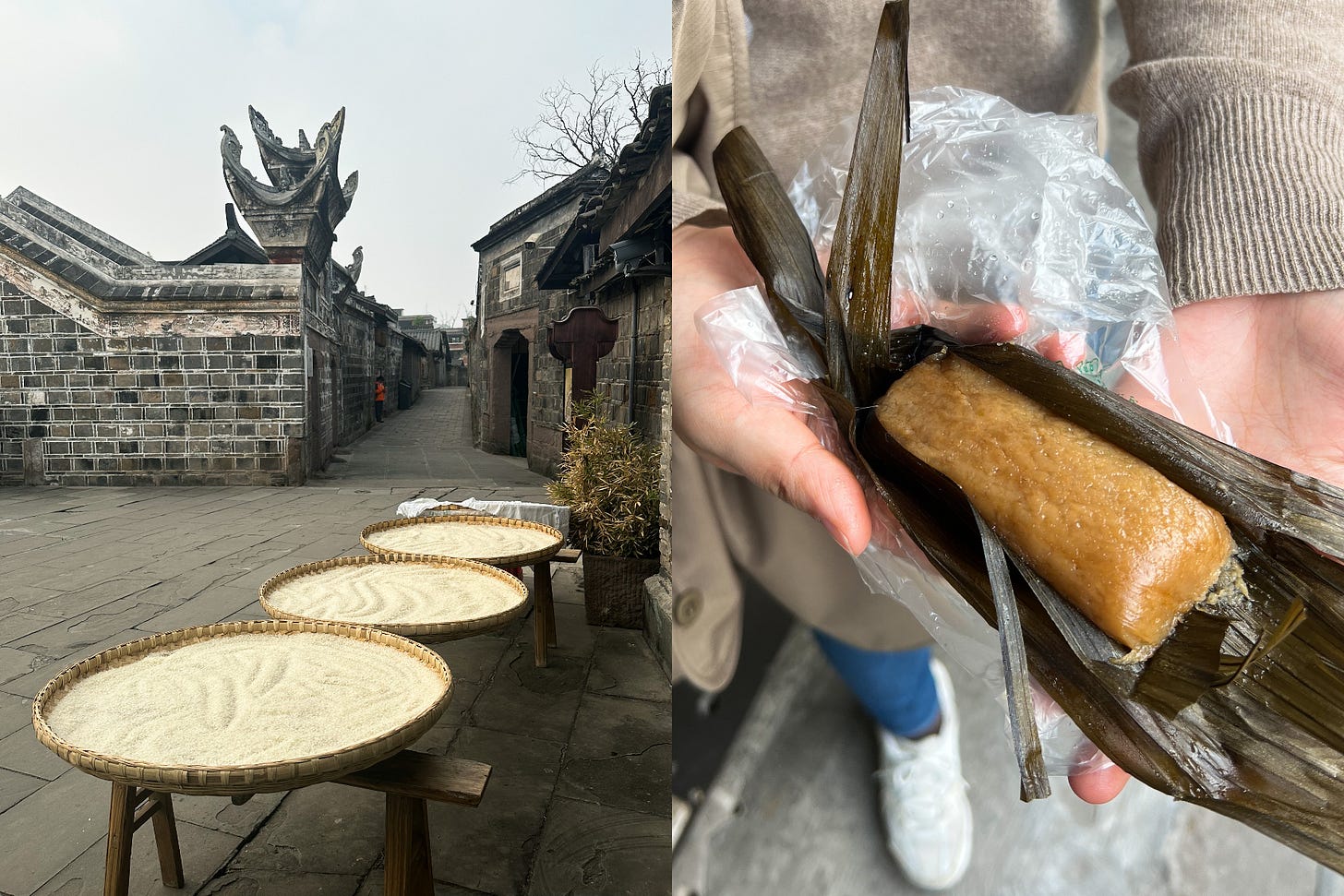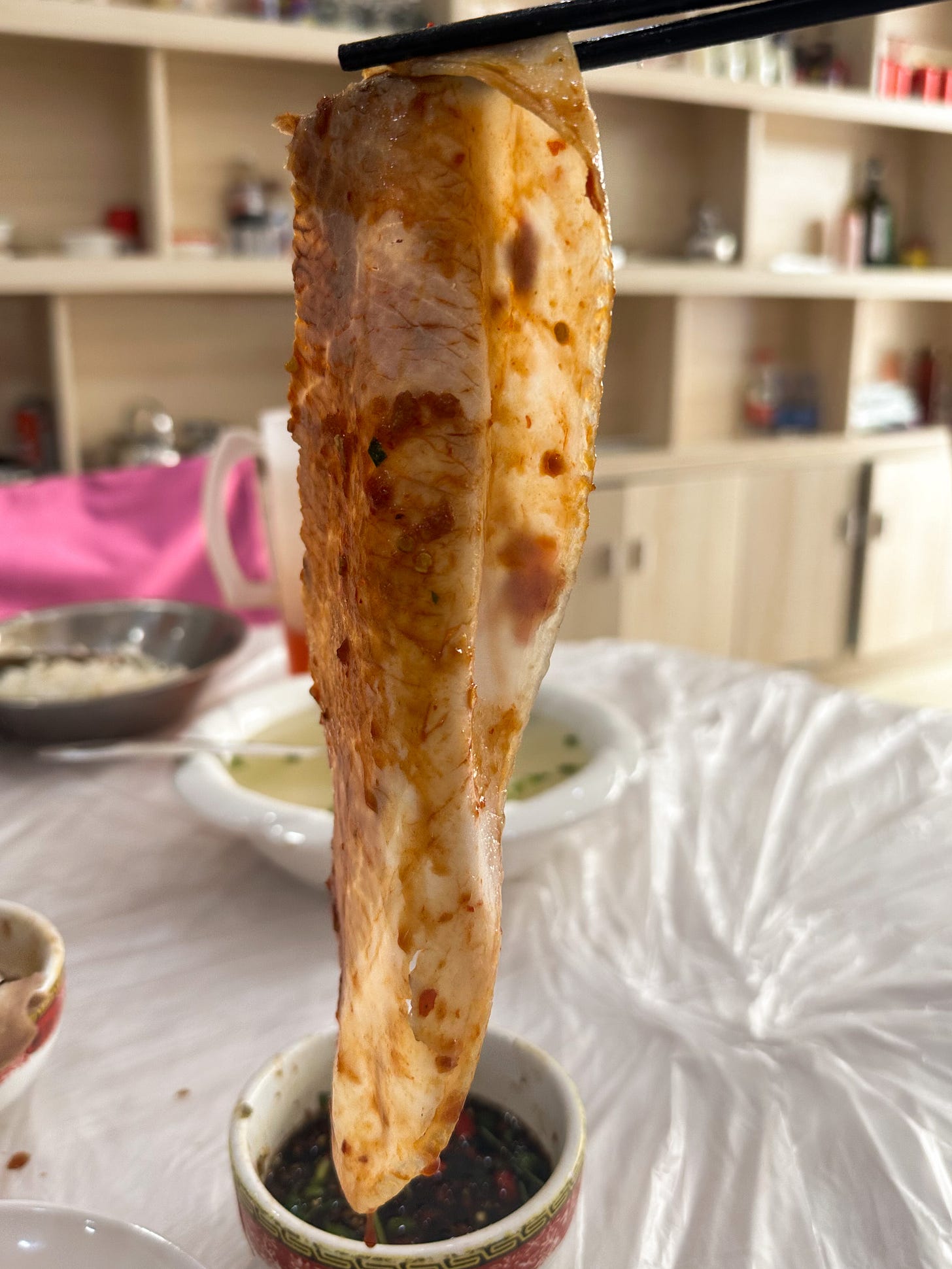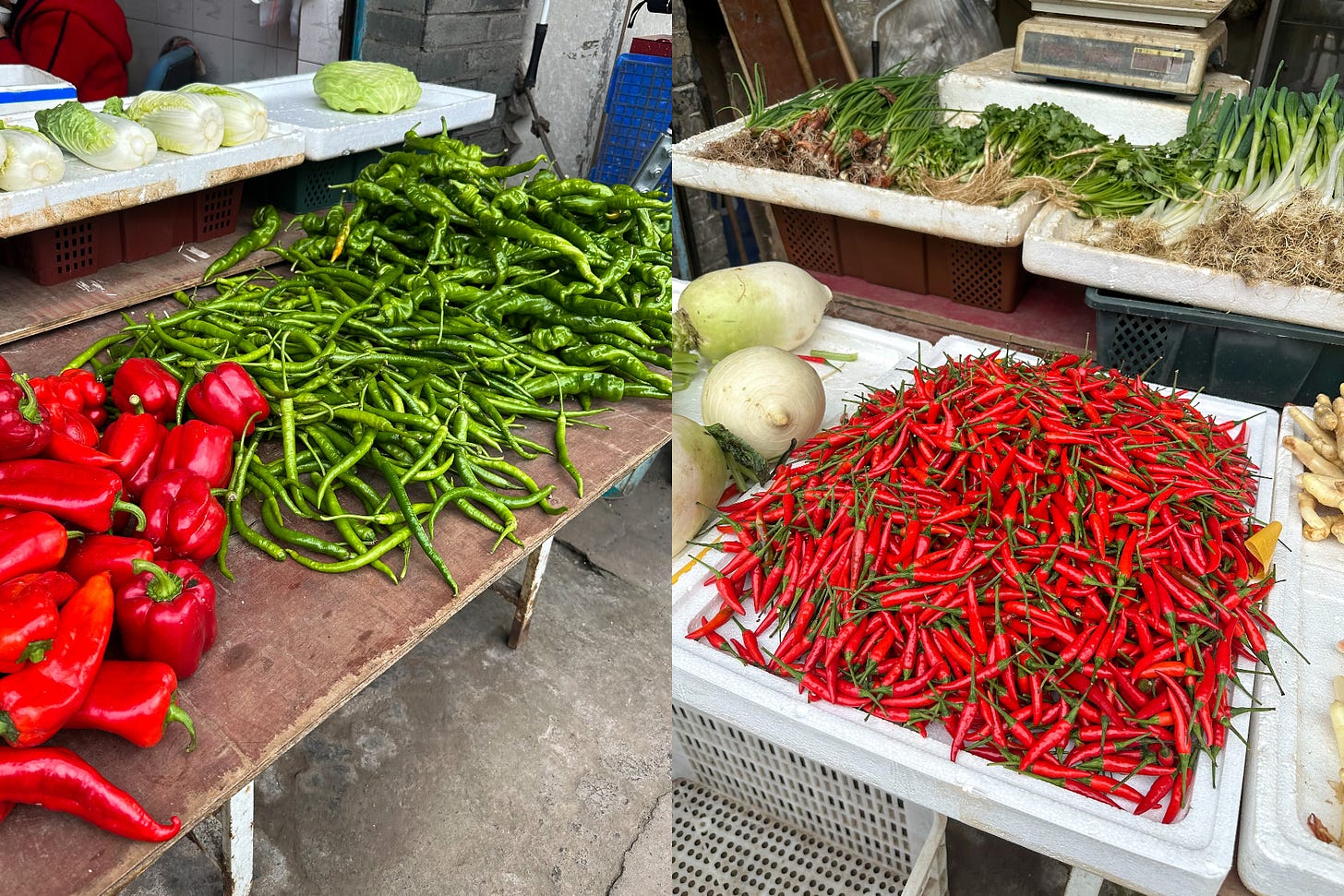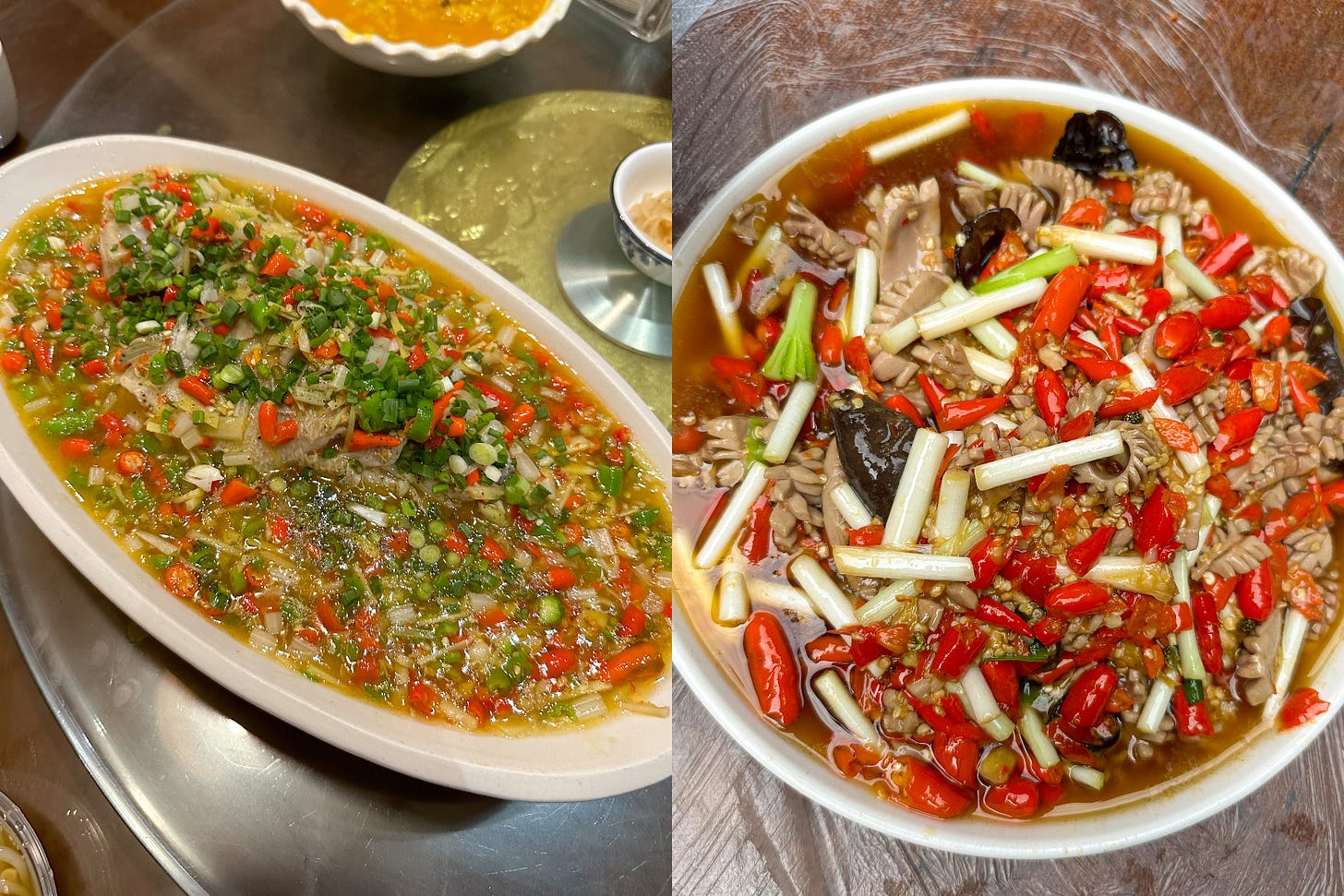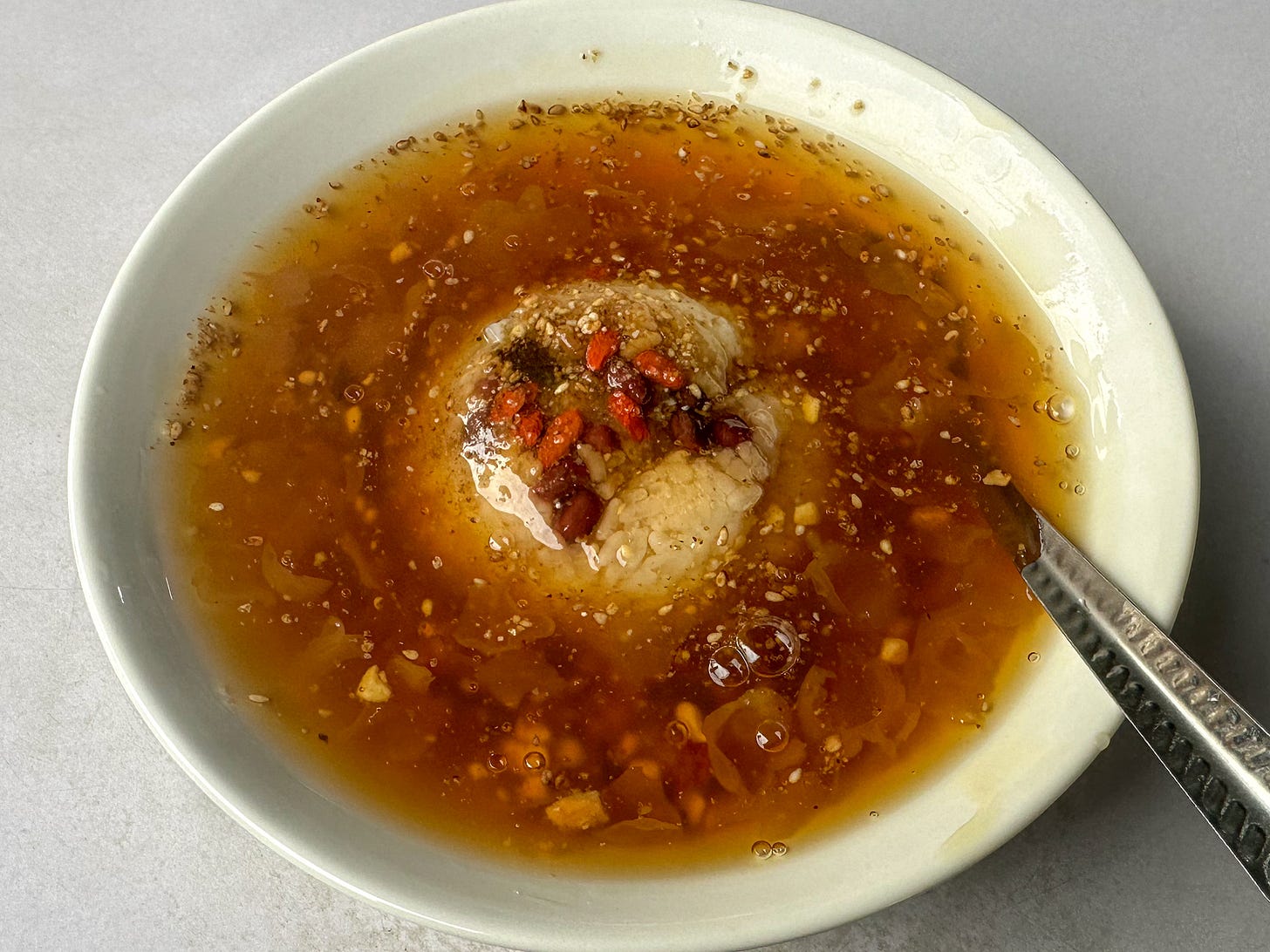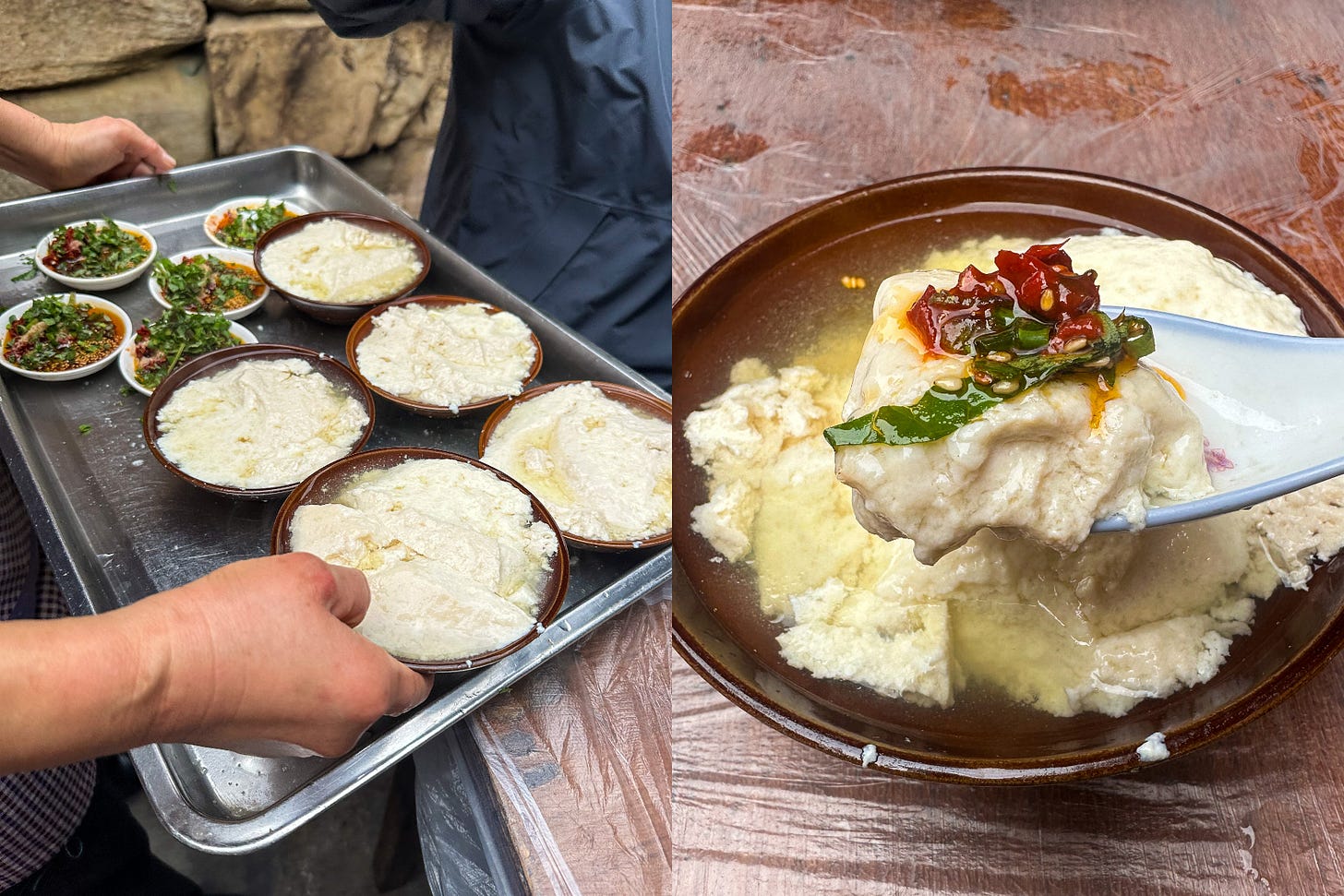Hey there! Over the next few newsletters, I'll be sharing some highlights from my recent food-focused travels in China (mostly my hometown, Sichuan), starting with my journey through southern Sichuan.
While some argue that Chengdu, the metropolis, is filled with standardized chain restaurants, smaller cities still offer authentic Sichuan flavors. In the south of Sichuan, around Yibin and Zigong, lies one of the three subgroups of Sichuan cuisine called xiao he bang (小河帮)1. This genre remains closest to ancient Sichuan culinary traditions2, heavily featuring glutinous rice, locally grown chilis and ginger. It's the birthplace of bold and flavorful classics like water-boiled beef, sliced pork with garlic sauce, and the Yibin burning noodles.
Yibin 宜宾
Yibin, the first city along the Yangtze River, holds fame for its expensive liquor brand, Wuliangye. Among food enthusiasts, the appeal lies in its signature dish, ranmian. For any homemade Dandan noodles, the essential and irreplaceable ingredient, yacai (a preserved mustard stem pickle), originates from Yibin.
Yibin Ranmian丨宜宾燃面
Ranmian, or "burning noodles," are dry-tossed noodles similar to dandan noodles. Ranmian restaurants are seen on almost every corner in Chengdu and are the go-to for quick breakfast. In Yibin, we found a modest noodle eatery serving noodles only for breakfast and lunch.
These noodles were freshly cooked, swiftly dressed in soy sauce, sesame oil, and a generous amount of chili oil, then topped with yacai, roasted peanuts, and chopped scallions. As the owner served the noodles to our table, he casually remarked to my dad, "At your age, you know what good noodles taste like." Despite my dad's reluctance to acknowledge the age factor, he devoured the plate as a silent praise. The owner, a man in his 50s, proudly mentioned that his stall had been around since 1987. His secret? Top-quality alkaline noodles and yacai, plus a vigorous dry-tossing method. He then dismissed the notion that noodles needed to be ignited as the name suggests.3
The alkaline noodles were chewier compared to most Chengdu eateries. The yacai was flavorful without being overly salty—a common issue with many store-bought packages. Each bite was covered in homemade chili oil, yacai, and crunchy peanuts. We also explored other menu options: steamed egg custard with minced meat, noodles with beef mince and chopped chili and cilantro (生椒牛肉面), and a milder bowl of soup noodles with mushroom and squid (口蘑面). All memorably delicious.
Lizhuang Bairou丨李庄白肉
About a 30-minute drive from Yibin lies Lizhuang, a preserved ancient town that once served as an evacuation spot for universities during the Sino-Japanese War. Strolling through its ancient streets, we encountered both touristy stores and local life, including the sight of locals using big bamboo sieves to dry steamed glutinous rice for congees.4
Lizhuang is known for Chinese liquor, glutinous rice cake, and sliced pork. The last one was the reason I came here. Here, restaurants set up stations outside where chefs showcase their remarkable knife skills, skillfully slicing giant chunks of cooked pork into paper-thin slices—each about 1 mm thick, thin enough to see through. While many might be familiar with suanni bairou (蒜泥白肉), sliced pork in a spicy garlicky sauce, Lizhuang serves the meat slices separately with a dipping sauce made from pounded chilis, garlic, and soy sauce.
To dip, you have to roll the big slice delicately with chopsticks and dip into the sauce. The meat is not greasy despite its fat content. Although I do prefer the more saucy version of suani bairou, the preparation technique was intriguing to watch.
Zigong丨自贡
Historically known for its salt wells, Zigong cuisine, also referred to as salt gang cuisine (盐帮菜), has been a beloved Sichuan sub-genre for years. During my undergraduate years at Sichuan University, Zigong restaurants always had the longest queues. Renowned for its lip-smacking spicy flavors and liberal use of chilis, Zigong cuisine features ingredients like freshwater fish (with its roe and maw), rabbit, and frogs, often served swimming in loads of ginger and chili.
Having teased my friends about their tolerance for "German spicy", I found my limit during this trip. Nearly every dish came with an abundance of fresh chilis. When we sought something milder, what arrived was a vegetable stir-fry generously dusted with chili flakes. I jokingly told my parents, "I'm in a chili coma."
The city still preserves an ancient salt mine and a museum showing the history of salt mining. One iconic Sichuan dish, water-boiled beef (shuizhu niurou, 水煮牛肉) is believed to have originated from salt mine workers, as oxen were used to transport salt. Alongside water-boiling, rapid stir-fries (bao chao, 爆炒) are also popular, involving quick wok-frying of ingredients like pork offals in woks at high heat.
Local eight treasure congee丨传统八宝粥
On a breakfast stall on the street, we had our usual beef noodles and chili wontons. However, we came here for something sweet. Here, a family has been preparing eight treasure congee (ba bao zhou, 八宝粥) for decades. Sticky rice isn't cooked in the soup; instead, it's steamed in small bowls so the rice kernels are still firm and plump. Upon serving, the rice is covered with a hot soup made from snow fungus, goji berries, and dried jujubes, then topped with sugared winter melon and toasted peanuts. I’m not a fan of eight treasure congee normally, however, one is more simple, soothing, and scrumptious.
Douhua with dipping sauce丨豆花
Before concluding our trip, we visited a nearby small town to sample another Zigong classic: douhua, freshly made unpressed soft tofu paired with a dipping sauce. While we didn’t make it to the renowned Fushun (富顺) known for its douhua, the preparation here was similar.
The eatery had an unassuming entrance, but most tables were set in the backyard, covered with disposable plastic sheets, and surrounded by plastic stools—a classic Sichuan "fly restaurant" phenomenon, where the shadier the appearance, the tastier the food.
The dou hua here was exceptional—soft yet not slimy, tender, warm, and boasting a nutty soybean flavor. After the initial round, my dad, again impressed, ordered a second serving. Its texture differed from the street snack douhua (using gypsum as a coagulate) and sweet tofu pudding, using locally produced nigari from the salt mine to coagulate soy milk. The dipping sauce here resembled bai rou, featuring pounded chilis, aromatic soy sauce, and fresh Korean mint—a refreshing and pungent combination.
A bowl of warm dou hua with dipping sauce and white rice remains a popular choice for breakfast or lunch in many smaller towns in Sichuan. I would love to enjoy these during my lunch break in Berlin.
List of places I visited:
(Google map doesn’t work so I linked the apple map here for you if you want to visit them one day )
burning noodles: 陆二倩燃面
bai rou: 映秋饭店
Zigong fish in chilis: 飞虹鱼庄
eight treasure congee: 30年老面馆传统八宝粥
douhua: 艾叶滩豆花庄
That wraps up the highlights of what I've been savoring during my first week back in Sichuan. These tastes will linger in my thoughts in the weeks to come, inspiring some new recipes when I’m back in the Berlin kitchen. Let me know what you'd like to see!
The other two subgroups hail from areas around Chengdu and Chongqing.
Historically, this part of Sichuan is less influenced by migrants, as stated in the book "History of Sichuan Cuisine" (中国川菜史).
I was researching the origin of the name. Some sources suggest the noodles were covered in oil that was flammable. However, a book from 1985 explained the name's origin as pouring pork lard on the noodles when serving, which is no longer common in modern ranmian preparation.
This type of precooked rice is a specialty known as yin mi zi (阴米子), which cooks quick and smooth congee.

